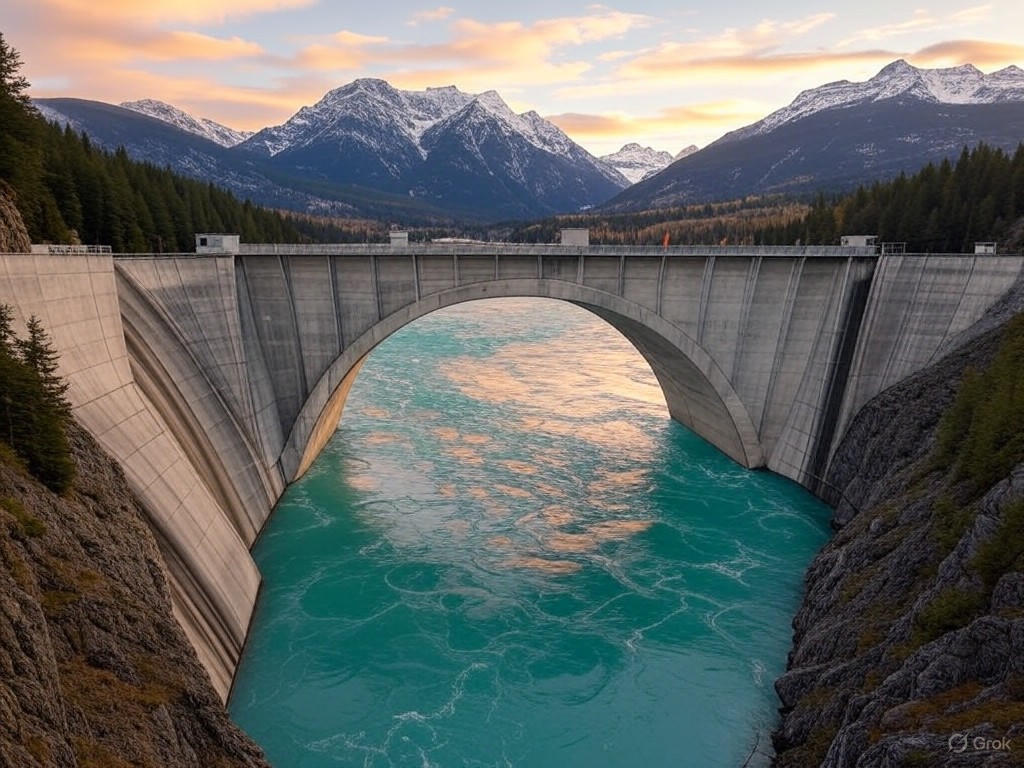BC’s Hydropower Challenges: A Global Energy Case Study
In the vast wilderness of British Columbia, where mighty rivers carve through ancient mountains like arteries of the earth, lies a tale of human ambition and natural wonder. Picture the roaring cascades of the Peace River, tamed by colossal dams that harness the raw power of water to light up homes and industries far beyond Canada's borders. Yet, as with any grand adventure, peril lurks in the currents. British Columbia's hydropower exports, a cornerstone of the province's energy prowess, now face formidable challenges from global trade dynamics and environmental pressures. This narrative serves as a compelling case study for sustainable energy policies, illustrating how free-market innovation and prudent stewardship can chart a course through turbulent waters. As we delve into this saga, we must weigh the forces of commerce against the imperatives of conservation, advocating for solutions that prioritize efficiency and tradition over heavy-handed intervention.
The Foundations of BC's Hydropower Legacy
British Columbia's hydropower sector stands as a testament to engineering ingenuity and economic foresight. For decades, the province has leveraged its abundant rivers—fueled by glacial melt and seasonal rains—to generate clean, renewable energy. With facilities like the W.A.C. Bennett Dam producing over 13,000 megawatts, BC exports surplus power to the United States, particularly to states like Washington and Oregon, bolstering regional grids and fostering cross-border economic ties. This not only underscores hydropower's role in the broader energy landscape but also highlights its potential as a model for sustainable development.
Yet, the story is not without its complications. Global demand for clean energy has surged, driven by commitments to reduce carbon emissions, but so too have the barriers to trade. Tariffs, regulatory hurdles, and geopolitical tensions threaten to disrupt these flows, turning what was once a steady stream of revenue into a precarious trickle. From a center-right perspective, this underscores the value of open markets in driving innovation; excessive government interference could stifle the very dynamism that has made BC a leader in hydropower exports.

The W.A.C. Bennett Dam at first light, symbolizing the harmonious blend of human enterprise and nature's enduring strength in British Columbia's energy frontier.
Trade Challenges in a Fractured Global Market
The intricacies of international trade pose significant obstacles for BC's hydropower ambitions. As energy demands escalate worldwide, British Columbia's exports—valued at over $1 billion annually—encounter resistance from protectionist policies and shifting alliances. For instance, U.S. tariffs on Canadian goods, initially imposed under various trade disputes, have raised costs and uncertainty for hydropower exporters Wall Street Journal. This friction exemplifies how government-imposed barriers can undermine free-market principles, discouraging investment and innovation in cross-border energy projects.
Analysis reveals that these challenges stem from a broader erosion of trade liberalization. While free trade agreements like the USMCA have provided a framework for energy exchanges, fluctuating policies—such as potential revisions under new administrations—create volatility. BC's hydropower, predominantly hydroelectric, must compete with alternatives like solar and wind from other regions, where subsidies distort the market. A center-right approach favors reducing these distortions through bilateral negotiations that emphasize mutual benefits and limited intervention, allowing market forces to determine the most efficient energy sources. Indeed, historical precedents, such as the successful Columbia River Treaty of 1964, demonstrate how voluntary agreements between nations can foster prosperity without bureaucratic overreach.
Environmental considerations further complicate trade dynamics. Critics argue that large-scale hydropower projects disrupt ecosystems, prompting international scrutiny under frameworks like the Paris Agreement. Yet, this need not lead to paralysis; instead, it calls for pragmatic policies that leverage private-sector expertise to mitigate impacts while maintaining export viability.
Environmental Hurdles and the Path to Sustainability
No discussion of BC's hydropower would be complete without addressing its environmental footprint. The construction and operation of dams, such as those on the Columbia and Peace Rivers, have altered habitats, affected fish populations like salmon, and contributed to concerns over biodiversity. According to a recent analysis, these projects, while renewable, can lead to methane emissions from reservoirs and alter water flows, potentially exacerbating climate vulnerabilities IEEE Spectrum. Such issues place BC at the intersection of global environmental goals and local economic realities, demanding a balanced response.
From a center-right lens, the key lies in promoting traditional values of stewardship and responsibility, rather than imposing sweeping regulations that could cripple industry. Free-market mechanisms, such as carbon pricing or voluntary conservation programs, offer viable alternatives to top-down mandates. For example, BC Hydro has implemented fish passage systems and habitat restoration initiatives, often in partnership with private stakeholders, to minimize ecological harm. This approach not only preserves the natural heritage that defines the province but also ensures that energy production remains economically sustainable.
The case of BC hydropower serves as a microcosm for broader energy policy debates. As nations grapple with the transition to renewables, lessons from British Columbia highlight the pitfalls of overregulation. A study by the Pembina Institute, an energy policy think tank, notes that flexible, market-oriented strategies have helped BC maintain its edge in hydropower exports despite environmental pushback Pembina Institute. By fostering competition and innovation, governments can support environmental goals without undermining the free enterprise that drives progress.

An aerial perspective of the Peace River watershed, illustrating the intricate balance between hydroelectric infrastructure and the pristine landscapes that sustain it.
Lessons for Sustainable Energy Policies: A Call for Market-Driven Solutions
As we draw this narrative to a close, the challenges facing BC's hydropower exports offer profound insights into crafting sustainable energy policies. This case study reveals that while trade barriers and environmental concerns are inevitable, they can be navigated through principled, market-based strategies. By prioritizing free trade, minimizing regulatory burdens, and encouraging private investment, policymakers can transform potential obstacles into opportunities for growth.
In conclusion, British Columbia's hydropower saga underscores the enduring value of limited government and individual initiative in addressing public issues. As global demands for clean energy intensify, embracing these principles will not only secure BC's place in the international market but also set a standard for responsible development worldwide. Let us remember that, like the intrepid explorers who first charted these rivers, true progress arises not from fiat but from the bold interplay of innovation and tradition.
For further reading on trade dynamics, refer to insights from Forbes Energy Blog, which advocates for pragmatic, market-focused reforms in the energy sector.

